Text
Proposal
For my dissertation, I wanted to investigate one of my favourite artists Frida Kahlo. I find her paintings beautiful to look at with a lot of depth and emotion behind them. When you look through her collection of work, you can see her life story being told, and you are able to walk through the events and moments she experienced. Not only is she an incredible artist who painted portraits and images inspired by her personal life, but she was also someone who suffered greatly yet continued to carry on and fight for what she believed in. From the age of 6, she was diagnosed with polio, resulting in one of her legs being noticeably smaller than the other. If this was not enough of an impact on her life, she later was involved in a tragic bus accident, which changed her life forever. After breaking many bones throughout her body and having a metal pole impale her in the abdomen, she was left bed bound for nine months and would find herself to be in and out of hospitals for the rest of her life. When deciding on a subject within the umbrella of Frida Kahlo's life, I had the option to look into her life story and talk about the influences she has had on people, or to talk about the unusual relationship she had with her husband Diego Rivera. However, I wanted to do something different as I feel this has been done many times before. Instead, I wanted to look at the reasons why Frida Kahlo is so famous today and recognized by people not even interested in art. When people see her face, they generally recognize her as Frida Kahlo, something other artists such as Pablo Picasso or Georgia O’Keeffe do not have the privilege of. However, whilst undergoing research on these facts, I noticed that even though people recognized and could name the woman with the monobrow, they didn’t necessarily know who she was and why she was famous. You will find Kahlo's image on anything from t-shirts and bags, to bars of soap and shot glasses. She has the reputation of being a feminist icon that people should look up to, yet they know nothing of her or her life story. Since discovering this I would like to investigate why Frida Kahlo has become famous for reasons other than the artwork she produced, and whether she is known for the strong woman she was or just a face to make money out of. I think this would be an interest to others as it may unveil issues we have in society that aren’t being addressed, due to the ignorance of consumers. By carrying out this research I will be able to understand the reasons behind why Frida Kahlo has become such a recognisable icon in modern day society and why this hasn’t been the case for other women like her.
The area of my research will be focused on comparing the woman Frida Kahlo was when she was alive, to the modern-day image society has now taken and made their own. I will be looking at the backstory of Kahlo and investigating why she became so famous in comparison to similar women who were either studying art, disabled or suffered greatly through life.
I have begun my research by reading Haydn Herrera’s 500-page biography on Kahlo's life (Herrera 1989). The book follows very detailed events that occur from her childhood, all the way through to her death at the age of 47. It contains many photographs and paintings done by the artist, as well as diary entries and letters she wrote through her lifetime. By reading this book, I hope to gain a greater knowledge of what her life was like, giving me more confidence to talk about her in my final essay knowing I have all the facts. Any key quotes or interesting events I find within the book, I log down on my Tumblr account, so that I have easy access back to them when writing out my final essay. Herrera’s book is a very biased and one sided view on Frida’s life, and some may claim that he shaped it in a way that only allowed viewers to see her in a good light. Therefore I will not only be getting my sources from this book, but also from many others. I have also
watched the film ‘Frida’(Taymor 2002) staring Salma Hayek that is in fact based on Herrera’s book. By watching the film as well as reading the book, I hope to gain a different view into what her life was like, having actual visuals of Mexico back in the 1900s. By watching the character of Frida acted out by Salma Hayek, you can create a greater understanding for the pain and emotion she dealt with in her life, whether it was through the pain of the bus accident, or the pain of her husband constantly cheating on her with other women.
When browsing through the internet for other sources, I came across a page called ‘Frida Kahlo is not your symbol’(Solarin 2018). I found this an intriguing title, as it wasn’t simply a ‘fan page’ that I had so often come across when researching the artist. On the site, I found a list of issues and arguments that have been raised due to people putting Frida's face on anything and everything in a feat to make money. It talks about how this would not only go against everything Frida Kahlo stood for, but it often wasn’t even portraying her correct appearance. An example shown was when the social media platform SnapChat created a filter for the Mexican artist back in 2017. However, when looking at the filter and the changes it made to an appearance, it was noticed that it would, in fact, create a paler complexion to that of the Mexican artist. People investigated further by placing the filter over the original Frida Kahlo self-portraits, and the results confirmed that it did, in fact, lighten the skin tone of the original image. Discovering this sparked outrage to the public and those with different skin tones. But this was not the last time this would occur. A year later in March 2018, the popular doll company ‘Barbie’ released a Frida Kahlo doll as part of their inspiring women series. When reading an article written by ‘The Independent’(Oppenheim 2018) aside from the copyright issues raised by the family, the doll itself has very few properties that made Frida Kahlo the woman she was. The doll once again has a very pale complexion, as well as being extremely skinny, something Barbie has been pulled up on many times before. However, the doll does not have a monobrow, one of Frida’s most noticeable features, nor does it show any evidence of the fact that she was disabled due to the bus accident, or the fact that she eventually lost one of her legs to gangrene later in life. Leaving these features out and making it seem that she was a completely abled white woman, takes away all the things that made Frida Kahlo the woman she was. An ironic quote I found on the ‘Frida Kahlo is not your symbol’ website, was that she claimed she hated white people, the USA, and capitalism, saying ‘I don’t like the gringos at all. They’re very boring and they’ve all got faces like unbaked rolls’(Solarin 2018). Having been a woman that had these views, you would think she would be condemned, but rather she was embraced by white feminists, only reimagined as a ghostly version of herself, free of any radicality and hardship. These points made on the ‘Frida Kahlo is not your symbol’ where interesting as I hadn’t come across the points made before, and made me want to investigate deeper into the issues raised.
This ignorance to whom Frida Kahlo was, was taken even further when British Prime Minister, Teresa May, wore a chunky Frida Kahlo bracelet during one of her speeches. Whilst May is a representative of the Conservative party, it seems ridiculous that she would wear a bracelet representing a woman who was a fervent communist and actually had an affair with Leon Trotsky, a Soviet politician. People may argue
that May simply wore the bracelet for aesthetic reasons, but should that be the case, it proves how ignorant people have become on the life and views Kahlo had and fought for.
During a recent trip to London, I was able to document just how popular Frida Kahlo merchandise is. When travelling round gift shops, clothes shops or just walking down the road, you could find her face everywhere. You could buy Frida Kahlo mirrors, bags, soap, shot glasses, glasses cases, fairy lights… A factor I did pick up on however was the fact that they were all based off the same photograph taken of her by Nickolas Muray.
You never see a painting of her ‘broken column’ or the ‘what I see in the water’, which I feel are beautiful pieces and represent her life better than the photograph simply showing off her beauty . The only reason I can think of for these pieces never being shown in the public eye or on items being sold in shops is due to the fact that it shows deeper layers to her, not just the fact that she was an attractive woman. The broken column does have partial nudity which I could understand some designers not wanting to feature if they target younger audiences, however, this is not a factor in all her artwork so why do people insist on using the same image of her.
So, a key concept that I will be looking at for the final essay is whether or not Frida Kahlo has simply become a face used to sell products and occasionally represent feminism and disability. Has she become a hollow shell that the public eye no longer recognizes for her artwork and life story? Do people no longer know her beliefs or what she stood for, and now simply see her as a pretty face with a monobrow on a tote bag.
I feel like this has unfortunately become the case, as we are living in a society where we only care about making money. As well as this I want to see if there is a reason that in many products created around the Frida Kahlo brand, that some of her key features have been left out, such as in the SnapChat filter or Barbie doll. I will be interested if this is a common factor that happens to other women and men of colour, or if it has simply happened to her, and if so why? To continue researching this question I would need to understand some more background information on Mexico in this time period. What the Mexican revolution was all about and why Frida had the views she did. When alive she would always wear very traditional Mexican dresses, rather than anything influenced by European clothing. I need to fill in the gaps of her reasoning behind this. Her father was originally from Germany, so what exactly was it about Europe and the USA that she so much hated. By filling in these gaps I would have a better insight of the history and beliefs she stood for, and then get a greater understanding on the outrage some people have toward what so many companies are doing with the Frida Kahlo brand.
Another concept to investigate within the subject is, why Frida Kahlo became such a huge icon and why it hasn’t happened for anyone else who was perhaps an artist that suffered from disabilities and illnesses. Was there specifically something she did that created such public love for her or was it just coincidence? To find an answer for this question I would need to look at other artists from her time and look at the similarities and differences they had.
I would be interested in researching and finding out more about the Frida Kahlo exhibition that recently took place in London. I was, unfortunately, unable to get tickets on the event, however, I think I could find some interesting points from the exhibition, and to get feedback from anyone who went to the event. To find this out I would need to do some more research online and find articles written in a review of the show. As well as this, I could possibly email people that went or were involved in the production of the show, and get their opinion, not only on the exhibition but on some other issues previously raised in my research. To carry this out I would need to create a consent form in order to prevent any issues possibly raised in the future, should the person I interviewed decided they no longer wanted to be a part of the research.
Over the summer I shall continue to read Frida’s biography by Herrera, as well as carrying out online research. As well as this I will be researching Mexican history in the 1900s to gain greater knowledge on Frida’s beliefs and understand on a greater scale why the Frida Kahlo of today would outrage Frida if she were alive to see it. I think I need to have a greater understanding on communism and the politics in general around this time, as some of the gaps in my knowledge on the subjects may become an issue when I am later writing my essay. Finally, I will try and investigate further into the Barbie doll of Frida Kahlo and the issues that revolved around it. I would like to see what exactly happened with the copyright laws that resulted in the doll being removed from shop shelves, and why the doll didn’t have any of Frida’s attributes in the first place.
References:
Herrera, H. (1989). The biography of Frida Kahlo. London, Bloomsbury Publishing.
Oppenheim, M. (2018). Frida Kahlo's family vent anger at Barbie doll version of Mexican artist. The Independant
Solarin, A. (2018). "Frida Kahlo is not your symbol." from https://www.dazeddigital.com/art-photography/article/40259/1/frida-kahlo-is-not-your-symbol.
Taymor, J. (2002). Frida.
Figure 1:
Guillermo Kahlo, (1932), Portrait of Frida Kahlo [ONLINE]. Available at: http://www.sothebys.com/en/auctions/ecatalogue/2014/latin-american-art-n09152/lot.148.html [Accessed 29 April 2019].
Figure 2:
Hayden Herrera, (2018), The biography of Frida Kahlo [ONLINE]. Available at: https://www.bloomsbury.com/uk/frida-9781526605313/ [Accessed 29 April 2019].
Figure 3:
seams and stitches, (2011), Frida [ONLINE]. Available at: https://seamsandstitches.wordpress.com/2011/11/10/frida/ [Accessed 29 April 2019].
Figure 4:
Alamy & Snapchat, (2017), Self-portrait run through Snapchat’s filter [ONLINE]. Available at: https://www.theguardian.com/technology/2017/mar/08/snapchat-international-womens-day-frida-kahlo-marie-curie?utm_source=dlvr.it&utm_medium=twitter [Accessed 29 April 2019].
Figure 5:
Kelley Lindberg, (2018), Barbie Inspiring Women Series Frida Kahlo Doll [ONLINE]. Available at: https://www.perfectory.com/frida-kahlo-barbie-doll/ [Accessed 29 April 2019].
Figure 6:
Express, (2017), Was the Prime Minister sending a message with her Friday Kahlo bracelet [ONLINE]. Available at: https://www.express.co.uk/life-style/life/862233/theresa-may-speech-frida-kahlo-bracelet [Accessed 29 April 2019].
Figure 7:
Nickolas Muray, (1939), Frida on White Bench, New York [ONLINE]. Available at: https://www.theguardian.com/artanddesign/gallery/2017/apr/08/frida-kahlo-nickolas-muray-photos-pictures [Accessed 29 April 2019].
1 note
·
View note
Text
Proposal - First draft
For my dissertation I wanted to look into one of my favourite artists Frida Kahlo. I find her paintings beautiful to look at with a lot of depth and emotion behind them. When you look through her collection of work, you can see her life story being told, and your able to walk through the events and moments she experienced. Not only is she an incredible artist who painted portraits and images inspired by her personal life, but she was also someone who suffered greatly yet continued to carry on an fight for what she believed in. From the age of 6 she was diagnosed with polio, resulting in one of her legs being noticeably smaller than the other. If this was not enough of an impact on her life, she later was involved in a tragic bus accident, which changed her life forever. After breaking many bones throughout her body, and having a metal pole impale her in the abdomen, she was left bed bound for nine months and would find herself to be in and out of hospitals for the rest of her life. When deciding on a subject with in the umbrella of Frida Kahlos life, I had the option to look into her life story and talk about the influences shes had on people, or to talk about the unusual relationship she had with her husband Diego Rivera, however I wanted to do something different as I feel this has been done many times before. Instead I wanted to look at the reasons why Frida Kahlo is so famous today, and recognised by people not even interested in art. When people see her face, they generally recognise her as Frida Kahlo, something other artists such as Pablo Picasso or Georgia O’Keeffe do not have the privilege of. However whilst undergoing research on these facts, I noticed that even though people recognised and could name the woman with the monobrow, they didn’t necessarily know who she was and why she was famous. You will find Kahlos image on anything from t shirts and bags, to bars of soap and shot glasses. She had the reputation of being a feminist icon that people should look up to, yet they know nothing of her or her life story. Since discovering this I would like to investigate why Frida Kahlo has become famous for reasons other than the artwork she produced, and whether she is known for the strong woman she was or just a face to make money out of. I think this would be an interest to others as it may unveil issues we have in society that aren’t being addressed, due to the ignorance of consumers. By reading my final essay you will learn more about Frida Kahlo as person rather than her simply being a monobrow on a t shirt sold in Primark.
I have began my research by reading Haydn Herrera’s 500 page biography on Frida Kahlos life. The book follows very detailed events that occur from her childhood, all the way through to her death at the age of 47. It contains many photographs and paintings done by the artist, as well as diery entries and letters she wrote through her lifetime. By reading this book, I hope to gain a greater knowledge of what her life was like, giving me more confidence to talk about her in my final essay knowing I have all the facts. Any key quotes or interesting events I find within the book, I log down on my Tumblr account, so that I have easy access back to them when writing out my final essay. As well as reading the book, I have watched the film ‘Frida’ staring Salma Hayek that is in fact based off Herrera’s book. By watching the film as well as reading the book, I hope to gain a new insight into what her life was like, having actual visuals of Mexico back in the 1900’s. By watching the character of Frida acted out by Salma Hayek, you can create a greater understanding for the pain and emotion she dealt with in her life, whether it was through the pain of the bus accident, or the pain of her husband constantly cheating on her with other woman.
When browsing through the internet, I came across a page called ‘Frida Kahlo is not your symbol’. I found this an intreging title, as it wasn’t simply a ‘fan page’ that I had so often come across when researching the artist. On the site I found a list of issues and arguments that have been raised due to people putting Fridas face on anytings and everything in a feat to make money. It talks about how this would not only go against everything Frida Kahlo stood for, but it often wasn’t even portraying her correct appearance. An example of this would be when social media platform snapchat, created a filter for the Mexican artist back in 2017. However when looking at the filter and the changes it made to a persons appearance, it was noticed that it would in fact create a paler complexion to that of the Mexican artist. People investigated further by placing the filter over the original Frida Kahlo self portraits, and the results confirmed that it did in fact lighten the skin tone of the original image. Discovering this sparked outrage to the public and those with different skin tones. But this was not the last time this would occur. A year later in march 2018, the popular doll company ‘Barbie’ released a Frida Kahlo doll as part of their inspiring women series. When reading an article written by ‘The Independent’ aside from the copywrite issues raised by the family, the doll itself has very few properties that made Frida Kahlo the woman she was. The doll once again has a very pale complexion, as well as being extremely skinny, something barbie has been pulled up on many times before. However the doll does not have a monobrow, one of Frida’s most noticeable features, nor does it show any evidence of the fact that she was disabled due to the bus accident, or the fact that she eventually lost one of her legs to gangrene later on in life. Leaving these features out and making it seem that she was a completely abled white woman, takes away all the things that made Frida Kahlo the woman she was. An ironic quote I found on the ‘Frida Kahlo is not your symbol’ website, was that she claimed she hated white people, the USA and capitalism, saying ‘ I don’t like the gringos at all. They’re very boring and they’ve all got faces like unbaked rolls’. Having been a woman that had these views, you would think she would be condemned, but rather she was embraced by white feminists, only reimagined as a ghostly version of herself, free of any radicality and hardship.
This ignorance to who Frida Kahlo was taken even further when British Prime Minister, Teresa May, wore a chunky Frida Kahlo bracelet during one of her speeches. Whilst May is a representative of the conservative party, it seems ridiculous that she would wear a bracelet representing a woman who was a fervent communist and actually had an affaire with Leon Trotsky, a soviet politician. People may argue that May simply wore the bracelet for aesthetic reasons, but that just proves how ignorant people have people on the views Kahlo had and fought for.
During a recent trip to London, I was able to document just how popular Frida Kahlo merchandise is. When travelling round gift shops, clothes shops or just walking down the road, you could find her face everywhere. You could buy Frida Kahlo mirrors, bags, soap, shot glasses, glasses cases, fairy lights… A factor I did pick up on however was the fact that they were all the same image of her.
You never see a painting of her ‘broken column’ or the ‘what I see in the water’, which I feel are beautiful pieces. The only reason I can think of for these pieces never being shown in the public eye or on items being sold in shops, is due to the fact that it shows deeper layers to her, not just the fact that she was a beautiful woman. The broken column does have partial nudity which I could understand some designers not wanting to feature if they target younger audiences, however this is not a factor in all of her artwork so why do people insist on using the same image of her.
So a key concepts that I will be looking at for the final essay is whether or not Frida Kahlo has simply become a face used to sell products and occasionally represent feminism. Has she become a hallow shell that the public eye no longer recognises for her artwork and life story. Do people no longer know her belief or what she stood for, and now simply see her as a pretty face with a monobrow on a tote bag. I feel like this has unfortunately become the case, as we are living in a society were we only care about making money. As well as this I want to see if there is a reason that in many products created around the Frida Kahlo brand, that some of her key features have been left out, such as in the snapchat filter or Barbie doll. I will be interested if this is a common factor that happens to other women and men of colour, or if it has simply happened to her, and if so why? To continue researching down this question I would need to understand some more background information on Mexico in this time period. What the Mexican revolution was all about and why Frida had the views she did. When alive she would always wear very traditional Mexican dresses, rather than anything influenced by European clothing. I need to fill in the gaps of her reasoning behind this. Her farther was originally from Germany, so what exactly was it about Europe and the USA that she so much hated. By filling in these gaps I would have a better insight of the history and beliefs she stood for, and then get greater understanding on the outrage some people have toward what so many companies are doing with the Frida Kahlo brand.
I would also be interested in researching and finding out more about the Frida Kahlo exhibition that recently took place in London. I was unfortunately unable to get tickets on the event, however I think I could find some interesting points from the exhibition, and to get feedback from anyone who went to the event. To find this out I would need to do some more research online and find articles written in review of the show. As well as this, I could possibly email people that went or were involved in production of the show, and get there opinion, not only on the exhibition, but on some other issues previously raised in my research. To carry this out I would need to create a consent form in order to prevent any issues possibly raised in the future, should the person I interviewed decided they no longer wanted to be a part of the research.
Over the summer I shall continue to read Frida’s biography by Herrera, as well as carrying out online research. As well as this I will be researching Mexican history in the 1900’s to gain greater knowledge on Frida’s beliefs and understand on a greater scale why the Frida Kahlo of today would outrage Frida if she were alive to see it today. I think I need to have a greater understanding on communism and the politics in general around this time, as some of the gaps in my knowledge on the subjects may become an issue when I am later writing my essay. Finally I will try and investigate further into the barbie doll of Frida Kahlo and the issues that revolved around it. I would like to see what exactly happened with the copywrite laws that resulted in the doll being removed from shop shelves, and why the doll didn’t have any of Frida’s attributes in the first place.
2 notes
·
View notes
Photo


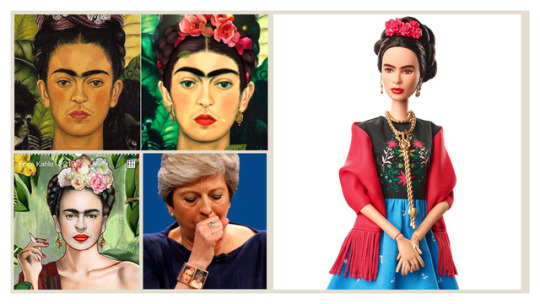

03-04-2019
Completed my presentation on Frida Kahlo today in front of my small group. I feel it went well and I gained some feedback on what I need to look at moving forward.
0 notes
Quote
A fellow communist and supporter of the revolution, Rivera often created political murals that attacked the ruling class and capitalism, elevating Mexico's native heritage and anti-colonial efforts instead. So when he suggested Kahlo begin wearing traditional clothing as a show of Mexican pride, she embraced the idea wholeheartedly. https://edition.cnn.com/style/article/frida-kahlo-mexican-fashion/index.html
0 notes
Photo

Barbie created a Frida Kahlo Barbie which angered many people and goes to show that there is a lack of intrest in Frida Kahlo herself, more the brand of her and how they can make money.
The doll was greatly slimmed down, as Frida was not that skinny
There was no evidence to the physical disabilities she had
She does not have a uni-brow
Her skin is far to pale in complexion
The costume does not accurately represent her Mexican clothing
(https://www.bbc.co.uk/news/world-latin-america-43845069)
0 notes
Text
Frida Kahlo becoming famous for reasons other than her artwork
Idolisation on a global scale
- Whitewashed Snapchat filter
- Watered down narrative
While her work is based entirely on her life struggles, disability, still birth... This rarely features in mainstream discussion.
- Frida Kahlo hated white people, the USA and capitalism. 'They're very boring and they have faces like unbaked rolls'
Rather than condemn her, white feminism has embraced her ( a ghostly double, free from radicality and hardship)
-When discussing Kahlo in the superficial, only through her style, it undermines her ethnicity, disability and hardships. everything that made her who she was.
(Frida Kahlo is not your icon)
0 notes
Link
1 note
·
View note
Text
’Frida challenged beauty norms, her unibrows and light moustache, a testament to her rejection of the then and present beauty standards. While Frida's radical aesthetics has the potential to challenge Euro-centric beauty standards in Bangladesh, her white-washed representation in our pop culture, with fair skin, moustache-free upper lips, and lightened unibrow, actively reinstates the Eurocentrism and able-bodiness that she so adamantly resisted. In Bangladesh, Frida is not a radical Mexican feminist, but a cultural icon imported from white, Western media. She stands for every day, mass-market, feminism targeted towards able-bodied, cis-gendered, privileged women.
Thus, echoing a very timely and hard-hitting article on Dazed titled “Frida Kahlo is not your symbol” which says, “This ultimately leaves her inaccessible to minority groups while simultaneously allowing privileged people to embrace her without having to come into conflict with aspects of her that contradict their behaviours.”
And, thus leaving Frida's legacy in peril. Will Frida remain simply a face on our t-shirts and saris, palatable as a cool figure? Or will Bangladesh, where feminism too is experiencing a new-found momentum, give Frida a full homage, where we will see her as she would want to have been seen? Complete with her politics, struggles, and sexual identity?’
https://www.thedailystar.net/star-weekend/opinion/frida-colours-capitalism-1604290
0 notes
Text
‘But try as she might, Frida cannot escape the cult-hood status she has been exalted to. Far from the West, here in Bangladesh too, she is having a moment. She is on saris being sold at exorbitant prices, on jackets, mugs, earrings, pillow covers, fridge-magnets—you name it, chances are, Frida has been flattened, reproduced, and reprinted hundreds of thousands of times, helping to generate revenues. This adulation of Frida, limited to the superficial, simply celebrating her as a style icon, goes to undermine her ethnicity, her disability and her principles–all of what made Frida Kahlo, the icon that she is today.
The 'sanitised' Frida Kahlo idolatry and the wave of commodification surrounding it, is not completely bad despite the many misgivings I have with it. It does make sense to see a resurgence of Frida Kahlo, a socialist figure, in Bangladesh, a country founded on principles of socialism. Yet, to see a watered-down narrative that is simply limited to trite symbolism leaves the story half-told.’
https://www.thedailystar.net/star-weekend/opinion/frida-colours-capitalism-1604290
0 notes
Link
0 notes
Photo

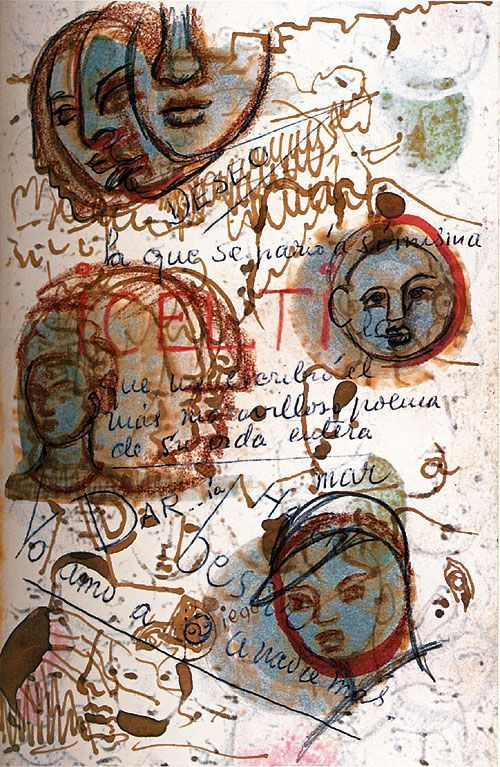



Frida and her obsession of self-portraits: fetishism or idolatry?
(www.fridakahlo.it/en/selfportraits.php#prettyPhoto)
‘Frida made several details of her body become fetishes, through a real disintegration of her self/body scattered in her paintings and drawings.
This fragmentation method was mainly put into practice in Frida's diary. The pages of the diary are full of bodies and parts of bodies, placed in an accidental way, sometimes sketched, simply outlined or created through spots, sometimes inserted in net structures where hands, foot, genitals and faces mix together.
This style has often been interpreted as close to surrealistic writing, according to the technique of "automatism" and words freedom. Frida herself denied this connection - "They thought I was a Surrealist but I wasn't. I never painted dreams. I painted my own reality" - driving us to a different reading, where the nearly maniacal concentration on herself becomes "turning into a thing", through the elimination of body inside/outside barrier (see "Two Fridas", "The broken column", "My nurse and I"), the fusion with nature sometimes as an animal ("The wounded deer") sometimes as a plant ("Roots"), the depiction of herself as a thing among other things ("Portrait on the borderline between Mexico and The United States" where Frida, dressed in pink, rises as a statue in the middle of the painting between things representing the Mexican tradition on one side and the technological landscape of North-America on the other one).’
0 notes
Photo
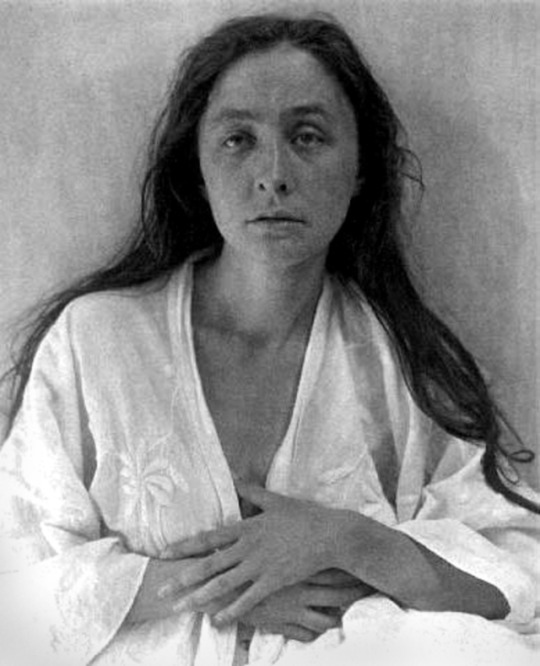
When looking at this photograph, many people would have no idea that it was Gergia O’Keeffe, especially those not educated in art. This is what makes Frida Kahlo so different to other artists, as when people see her face they know who she is, as well as when they see her paintings. With O’Keeffe many people would only recognise her from her flower paintings. This is something Frida has due to her artwork being based on her life. Most people know who she is because her look has become iconic, especially her monobrow. When looking at photos Ive taken, you can see her face is on socks, dresses, bags etc.
0 notes
Text
London!


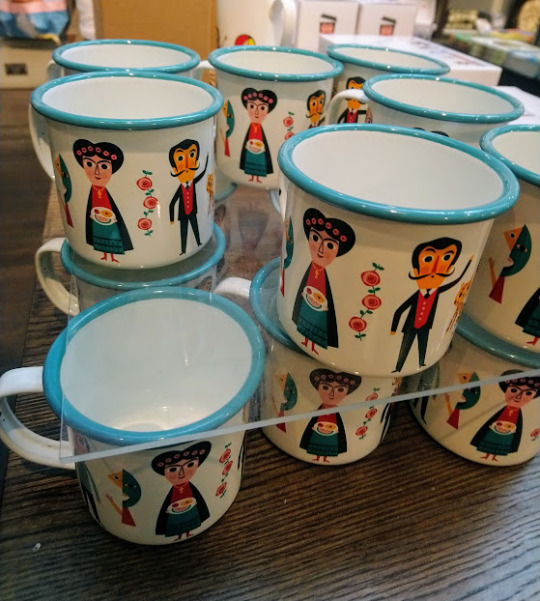



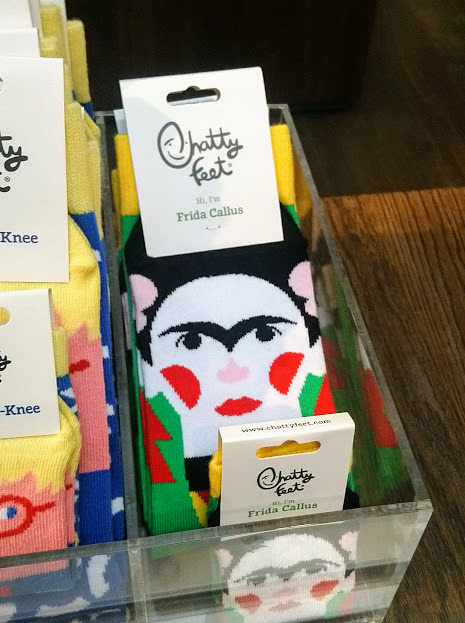


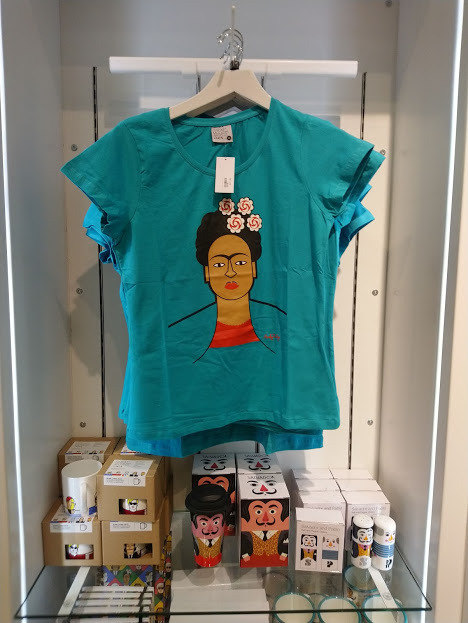





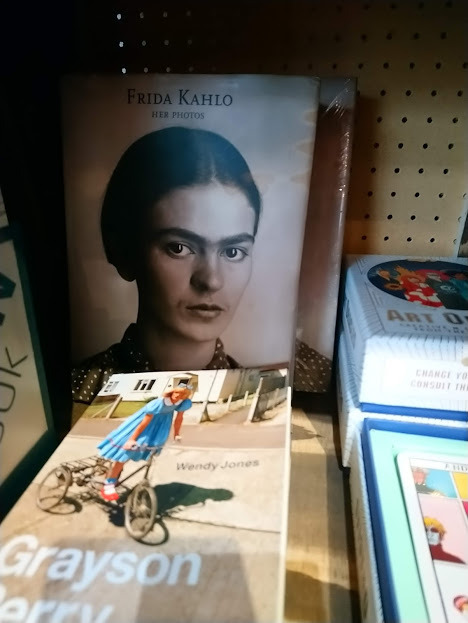
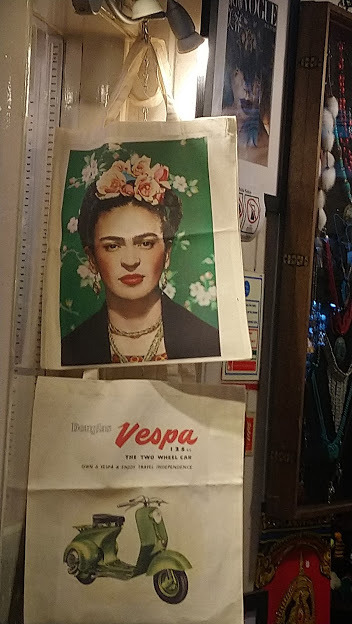


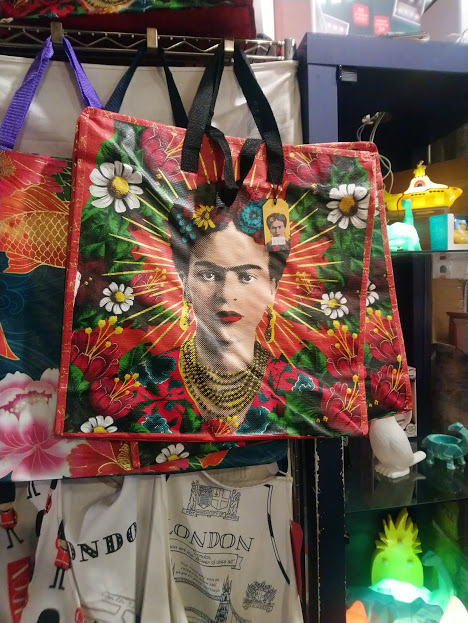





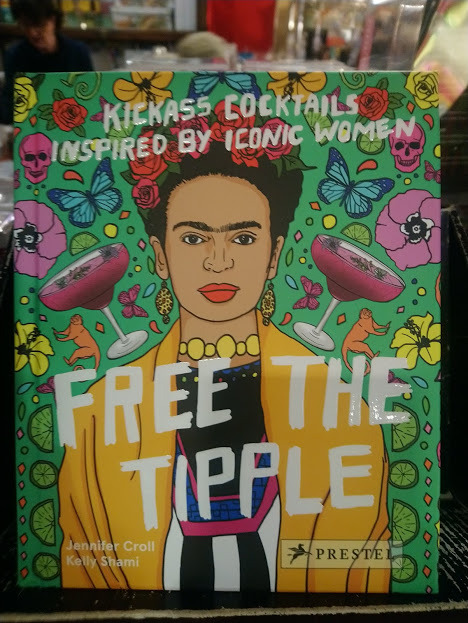
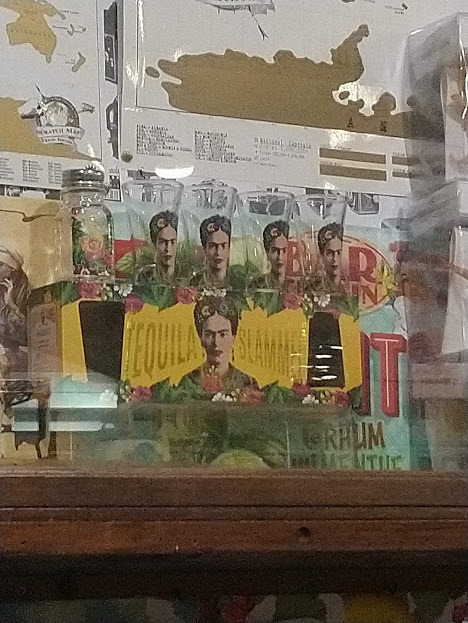
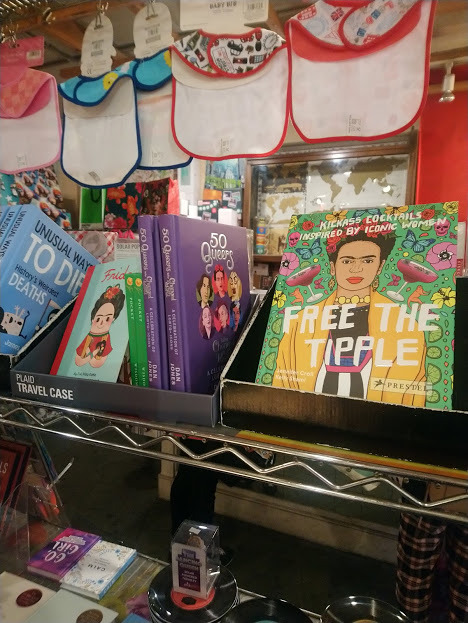


During my trip to London, I saw Frida’s face everywhere I looked. She was on posters, t-shirts, books, mugs, even egg cups.
1 note
·
View note
Quote
Frida reportedly came out with the astonishing statement: "My ambition is to have a child with Diego Rivera. And I'm going to tell him so someday"
(page 32) The Biography of Frida Kahlo, by Hayden Herrera
2 notes
·
View notes
Quote
He was thirty-six years old in 1922, world famous and fantastically fat
(page 31) The Biography of Frida Kahlo, by Hayden Herrera
0 notes
Quote
"We would set them on fire" said Jose Gomez Robleda, " and their the poor painter would be, amidst flames, and his paintings all ruined. The painters took to wearing huge pistols"
(page 31) The Biography of Frida Kahlo, by Hayden Herrera
0 notes